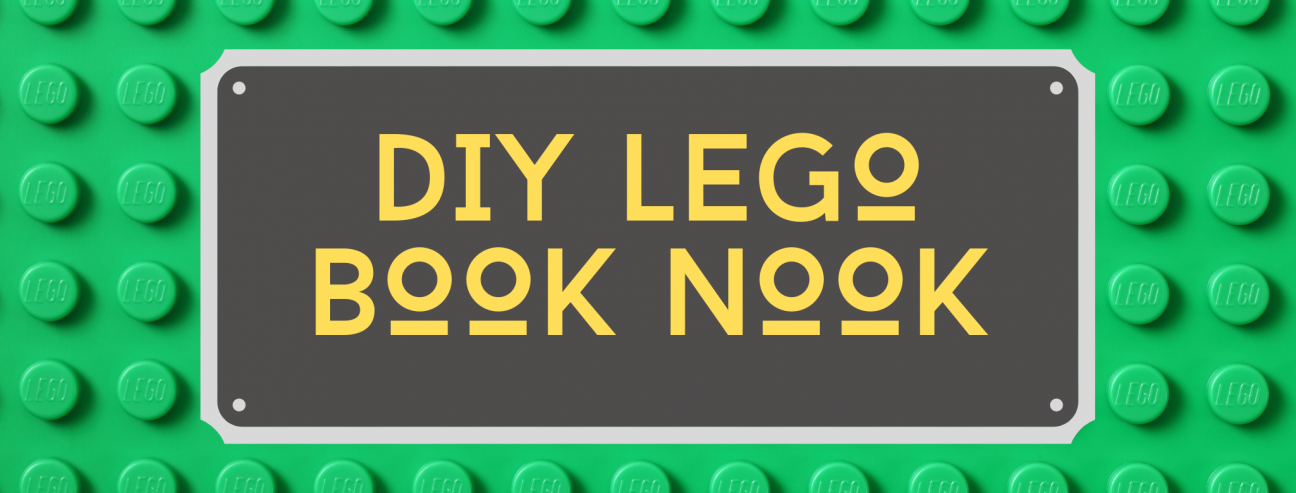
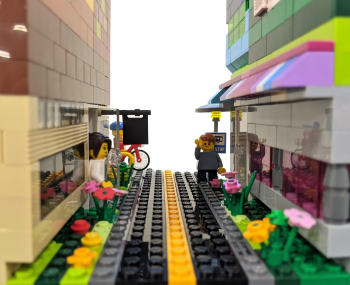
If you've never heard of a book nook, you're not alone. Until recently, I had no idea what they were, but they're pretty awesome. A hidden world tucked away on your bookshelf, book nooks can range from very simple to intricately detailed with LED lights and timers. It can be hard to get started on making one, though, if you don't have the right supplies.
But a lot of you probably have LEGO bricks lying around at home! LEGO is an easy, beginner-friendly version of the more complicated book nooks you might see floating around elsewhere on the internet. Continue for some tips and tricks to create your book nook, books to check out, and a time-lapse video of me building my own DIY LEGO book nook.
If LEGO blocks aren't your thing, search online or check out our eSource, Creativebug, for different kinds of book nook inspiration.

The first thing to consider is your base!
Things to take into account when designing your base:
- What's the average width of the books on your bookshelf? The average depth?
- How big do you want your book nook to be in comparison to your books?
- What size are the LEGO base plates you have available to you? Do you have other flat LEGO bricks that you can piece together to make them bigger/longer? (That's what I did)
- Do you have angled base pieces? These can be cool if you want to put a mirror on your finished book nook (more on that later)
- If you're going to use LEDs, do you need to build space into the base of your book nook to hold wires and/or batteries?
I used two angled pieces at the end of my base, so the dimensions for mine ended up being 16 dots wide (which is about the width of 2-3 YA books) and 21 dots deep on the shorter side.
The next thing to focus on is the width of your walls. When I started working on mine, I initially made the buildings on both sides of my book nook 3 dots deep. However, this left an even number of dots for my street/sidewalk/grass, and I needed an odd number for the yellow line. This meant I had to rework one whole side of my book nook down to 2 dots deep. If you know you want to make a street scene, keep this in mind. If you plan for it in advance, you'll be much less frustrated than I was!
You'll also want to take into account the LEGO bricks you have at your disposal. If you know you don't have a lot of a certain shape or size, it might be good to plan around that so you don't end up with a 1x1 hole that you can't fill because you ran out of gray bricks.
Something you'll probably worry about at the end of making your book nook, but I want to bring it to your attention now: cardboard. You can cut pieces of cardboard to roughly the size of both sides (and the base, if you want) and then paint them or wrap them in colorful paper and stick them to your book nook. This can help give it a clean finish as well as add stability (that's a big problem with LEGO; if you push your books together too hard, one or both walls of your book nook may come crashing down).

I went into this project wanting to make a Star Wars book nook.
My dreams were crushed almost immediately because we didn't have any Star Wars-themed LEGO bricks.
That's probably going to happen to you, too! You might go into this thinking you know exactly how you want your book nook to look, only to discover that you're missing some pretty crucial pieces. But that's okay. Try to work with what you do have—I guarantee that you'll end up with some pretty awesome features for your book nook that you wouldn't have come up with just by brainstorming ideas.
These are some of the things I didn't plan, but they ended up being some of my favorite features in my book nook:
- The yellow stripe through the second story
- Using different colors on a single story to make it look like there are multiple apartments or businesses
- I ran out of clear/transparent gray bricks pretty quickly, so I ended up using multi-color transparent bricks to make a stained glass window, as well as car windshields!

I'm sure we all remember how hard it is to pull flat LEGO bricks apart when they've been sandwiched together for too long. I can guarantee that you will have to do that while building your book nook. Probably multiple times. It's difficult, hard on your nails, and it makes it easy to get frustrated fast. Sometimes taking them off means taking apart what you've already done, but don't panic—you can probably put it together exactly as it was, but even if you can't, that's alright, too! You might end up with something even better.
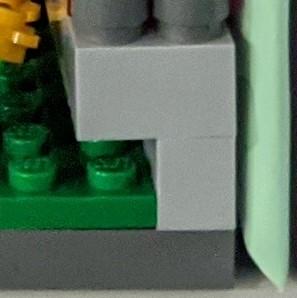
Speaking of taking things apart: you're probably going to break your book nook. When working on mine, I decided to make the windows on the bottom story of buildings overhang the street. This meant that, by the end, a whole lot of LEGO were being held stable by a one-dot row of LEGO. Having such a narrow base led to some instability, which often led to breaking my storefronts.
If you break your nook a few times, just remember to breathe, and maybe take a break for a bit. When you come back, you might realize there's a better way to do whatever it is you're trying. And if you're getting frustrated by having to undo and redo one section several times, that might be a sign that you should try something different!

There are a lot of cool LEGO bricks out there, particularly when it comes to small, decorative LEGO. Here are some ways you can use small, decorative LEGO to up your book nook game:
- Image
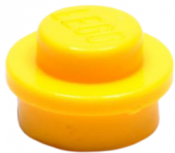
Flowers! Even if you don't have the three-strand grass/flower LEGO, you can use the little round 1x1 dots in several colors to suggest flowers
- If you're making buildings, you can put stuff in the windows to make them look like storefronts. While it won't be obvious when looking at it on the shelf, it can add depth to your world
- You could even have a LEGO minifig leaning out of a window! But even if you don't go that route, adding minifigs can add a lot of personality to your book nook
- And of course, just use what you have! Nothing fosters creativity more than taking a random pile of LEGO bricks and seeing what you can make with it. I ended up using lots of pendant-shaped bricks, as well as the tall round (or conical) shaped 1x1 bricks
Some other finishing touches can include:
- Cutting cardboard to the size of each side and taping it in place. This can increase stability, and if you paint the cardboard or wrap it in colored paper, it can help your book nook to pop on the shelf
- I've seen people put mirrors at the end of their nooks to create the illusion that it continues around a bend in the road (this is where the angled base pieces come in handy!). While it might be hard to find a mirror the right shape—or cut one to size—this can really up your book nook game
I'm going to talk about LEDs separately, because they're really cool! They can add a lot life to your book nook while also drawing attention to your shelf.
However, I don't know enough about wires to recommend a method for that in this program. That being said, you can always use one or two strategically placed battery-powered LEDs (such as fake tealight candles) to draw the eye. Just tape it to the back of your book nook, and voila! You've added some light to your book nook.
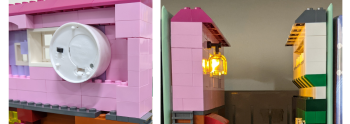
Now you have your book nook! The sky is truly the limit on these, and I can only imagine what y'all might have come up with. Here's a look at my finished book nook:
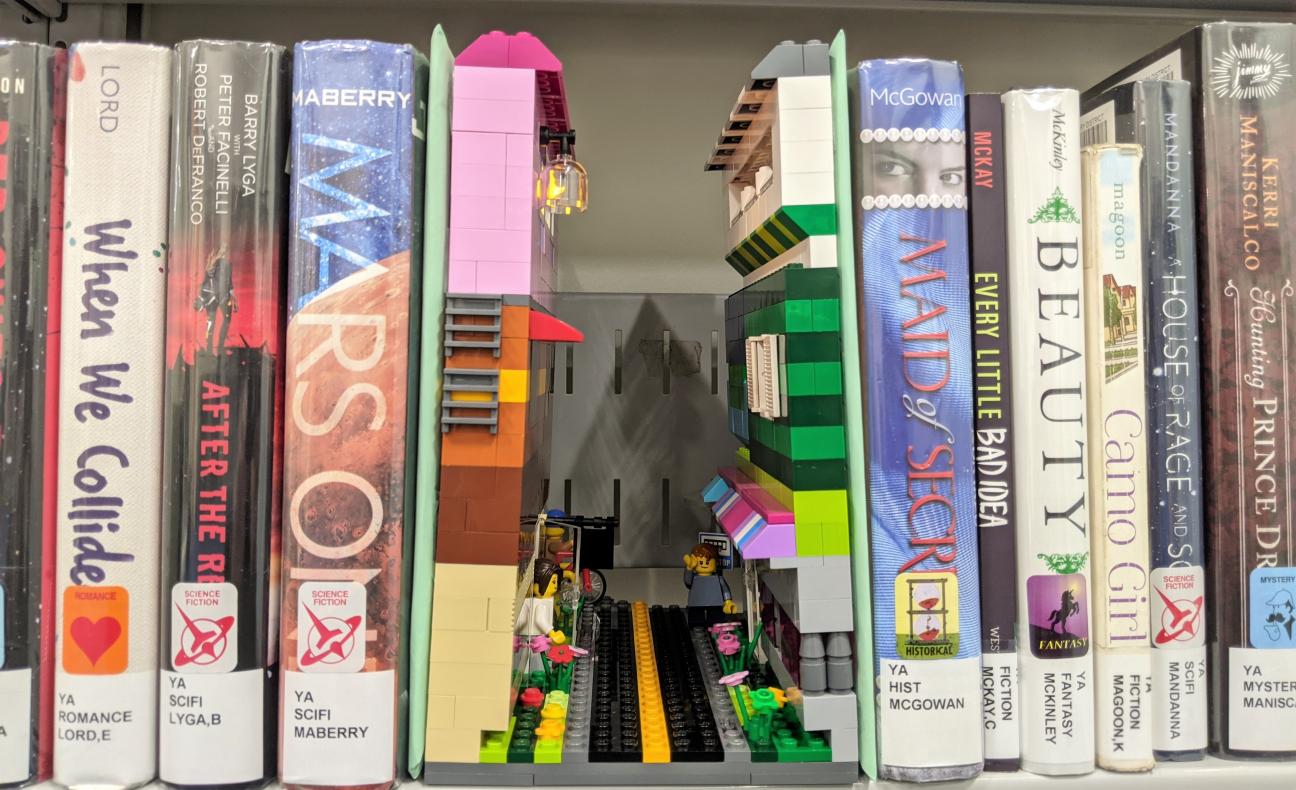
The really awesome thing about LEGO book nooks is that you can forever change and update them. There's nothing that says you're stuck with the same look forever, and I think that's pretty cool!
If you make a book nook and would like to share, tag the library on social media! We're on Facebook, Instagram, and Twitter, and we'd love to see what you create! Also, be sure to check out the time-lapse video of me building my book nook (minus the cardboard and the LEDs), which you can find below the book recommendations.

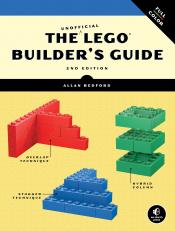
The Unofficial LEGO Builder's Guide, 2nd Edition by Allan Bedford
What's the difference between a tile and a plate? Why isn't it a good idea to stack bricks in columns to make a wall? How do you build a LEGO mosaic or build at different scales? You’ll find the answers to these and other questions in The Unofficial LEGO Builder’s Guide.
Now in full color, this brand-new edition of a well-loved favorite will show you how to:–Construct models that won't fall apart
–Choose the right pieces and substitute when needed
–Build to micro, jumbo, and miniland scale
–Make playable board games out of LEGO pieces
–Create photo mosaics and curved sculptures
–Build a miniature space shuttle, a minifig-sized train station, and more
Of course, the real fun of LEGO building lies in creating your own models—from choosing the subject to clicking that final brick into place. Learn how in The Unofficial LEGO Builder’s Guide.
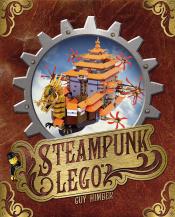
Filled with dirigibles and floating cities, penny-farthings and pirate ships, curiosities and robots galore, Steampunk LEGO is an illustrated collection of Victorian-era sci-fi treasures, all built from LEGO.
Curated by award-winning LEGO builder and special effects master Guy Himber, this full-color coffee table book showcases an eclectic variety of models designed by dozens of the world’s best LEGO artists.
Grab your brass goggles and join fictional explorer Sir Herbert Jobson as he travels the world cataloguing its technological wonders for Queen Victoria. His entertaining descriptions of an imaginative alternate history bring these delightful LEGO models to swashbuckling life.
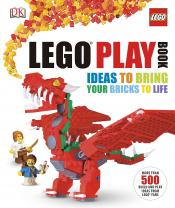
LEGO Play Book: Ideas to Bring Your Bricks to Life by Daniel Lipkowitz
Building on the success of wildly popular The LEGO Ideas Book, LEGO Play Book features more than 200 different builds that inspire readers to bring their bricks to life while encouraging them to use their imagination and play in new ways, creating amazing LEGO models of their very own. New models along with fresh photography spark new play ideas and LEGO creations.
Featuring a mixture of simple, medium, and complex models, Wired says, "It'll be a long time before you scratch your head, wondering what to build next, with the LEGO Play Book."
There are "ten-minute builds" for quick play sessions, a "cool brick" feature with ideas for using key LEGO bricks, and a "handful of bricks" section exploring what can be done with a limited collection of LEGO bricks.
A Family Choice Award Winner and National Parenting Publications Awards (NAPPA) Winner, LEGO Play Book is fantastic for any LEGO builder looking to be inspired to build and create.
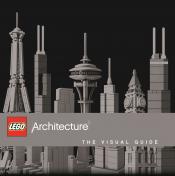
LEGO Architecture: The Visual Guide by Philip Wilkinson
Created in close collaboration with The LEGO Group and Adam Reed Tucker, LEGO® Architecture visionary, LEGO Architecture: The Visual Guide takes a deep look at the artists, builders, and inspiration behind the LEGO Architecture series. Beautifully illustrated and annotated, this visual guide allows you to explore the LEGO team's creative process in building and understand how LEGO artists translated such iconic buildings into these buildable LEGO sets. Stunning images and in-depth exploration of the real buildings like the Guggenheim™ or the Empire State Building, on which the LEGO Architecture series is based, provide you with a comprehensive look at the creation of these intricate sets. Learn why the LEGO team chose certain pieces and what particular challenges they faced. Read about the inspiration behind the creative processes and what designing and building techniques were used on various sets. Featuring profiles of the LEGO artists and builders who created the series and packaged in a sleek protective slipcase, LEGO Architecture: The Visual Guide is the ultimate illustrated tour of the LEGO Architecture series in all its micro-scale detail.

LEGO Awesome Ideas by Daniel Lipkowitz
Unlock the secrets of LEGO® building and create new worlds with your imagination.
Your guide to becoming a LEGO master builder. Become inspired with detailed master building techniques and tips to create amazing modules with your collection. Test and challenge your building skills, with hundreds of awesome ideas to choose from, ranging from beginner LEGO builds to more advanced creative modules.
A fun activity that stimulates creativity and tactical skills. LEGO blocks are to be played without limitations and this building guide is here to inspire you. This LEGO instructions book explores the endless possibilities you can create with your own LEGO brick collection. It’s up to you, show off your building skills or add amazing creative modules to your own LEGO world.
Are You Ready For The Most Awesome LEGO Building Adventures Yet?